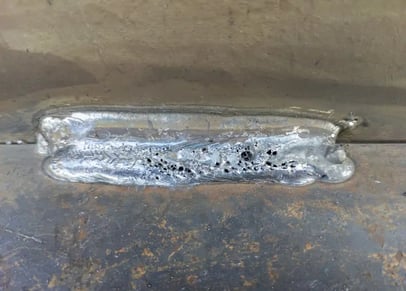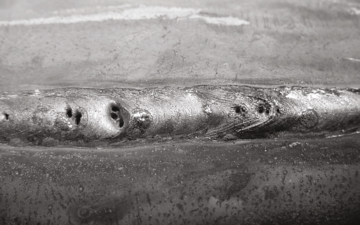What is Porosity in Welding: Usual Resources and Efficient Treatments
What is Porosity in Welding: Usual Resources and Efficient Treatments
Blog Article
Recognizing Porosity in Welding: Exploring Reasons, Results, and Avoidance Techniques
As professionals in the welding market are well mindful, understanding the causes, impacts, and prevention methods connected to porosity is crucial for achieving robust and reliable welds. By delving right into the origin creates of porosity, analyzing its detrimental results on weld quality, and checking out reliable avoidance approaches, welders can boost their expertise and skills to produce top quality welds constantly.
Usual Root Causes Of Porosity
Porosity in welding is mainly triggered by a mix of variables such as contamination, inappropriate protecting, and poor gas protection during the welding process. Contamination, in the kind of dirt, grease, or rust on the welding surface area, produces gas pockets when heated, causing porosity in the weld. Incorrect securing happens when the protecting gas, commonly utilized in procedures like MIG and TIG welding, is incapable to completely secure the molten weld pool from responding with the bordering air, resulting in gas entrapment and succeeding porosity. Furthermore, inadequate gas insurance coverage, usually as a result of inaccurate circulation rates or nozzle positioning, can leave components of the weld unguarded, enabling porosity to develop. These aspects collectively add to the development of voids within the weld, compromising its integrity and possibly causing structural issues. Recognizing and attending to these common reasons are essential steps in preventing porosity and ensuring the high quality and toughness of welded joints.
Effects on Weld High Quality
The visibility of porosity in a weld can significantly jeopardize the general high quality and honesty of the welded joint. Porosity within a weld develops gaps or tooth cavities that damage the structure, making it much more susceptible to fracturing, deterioration, and mechanical failure. These gaps act as tension concentrators, lowering the load-bearing capacity of the weld and increasing the probability of early failing under used tension. In addition, porosity can likewise serve as prospective sites for hydrogen entrapment, additional worsening the destruction of the weld's mechanical buildings.
Additionally, porosity can hinder the performance of non-destructive screening (NDT) methods, making it testing to find other problems or interruptions within the weld. This can lead to substantial safety issues, particularly in vital applications where the structural honesty of the welded elements is vital.

Avoidance Techniques Review
Given the harmful effect of porosity on weld high quality, reliable avoidance techniques are essential to keeping the architectural honesty of bonded joints. Additionally, picking the appropriate welding parameters, such as voltage, present, and travel rate, can aid lessen the threat of porosity development. By incorporating these prevention techniques right into welding pop over to this site techniques, the event of porosity can be substantially reduced, leading to stronger and more dependable welded joints.
Importance of Correct Shielding
Proper shielding in welding plays a crucial role in protecting against climatic contamination and guaranteeing the stability of bonded joints. Shielding gases, such as argon, helium, or a mixture of both, are generally made use of to secure the weld pool from responding with aspects in the air like oxygen and nitrogen. When these responsive aspects enter into call with the hot weld swimming pool, they can trigger porosity, resulting in weak welds with reduced mechanical homes.

Insufficient protecting can cause various defects like porosity, spatter, and oxidation, compromising the structural stability of the welded joint. Sticking to appropriate protecting practices is crucial to generate high-grade welds with minimal defects and make sure the longevity and reliability of the bonded parts.
Monitoring and Control Approaches
Exactly how can welders properly check and regulate the welding procedure to make certain optimal outcomes and avoid have a peek at this website flaws like porosity? By continually keeping track of these variables, welders can determine discrepancies from the excellent problems and make immediate modifications to prevent porosity development.

In addition, applying proper training programs for welders is essential for keeping an eye on and controlling the welding process properly. What is Porosity. Educating welders on the significance of preserving constant criteria, such as proper gas shielding and take a trip rate, can help avoid porosity issues. Normal evaluations and qualifications can likewise make sure that welders excel in monitoring and managing welding processes
Moreover, making use of automated welding systems can enhance blog here surveillance and control capacities. These systems can exactly regulate welding parameters, lowering the likelihood of human mistake and guaranteeing constant weld top quality. By integrating sophisticated tracking technologies, training programs, and automated systems, welders can efficiently keep track of and manage the welding procedure to decrease porosity issues and accomplish premium welds.
Final Thought

Report this page